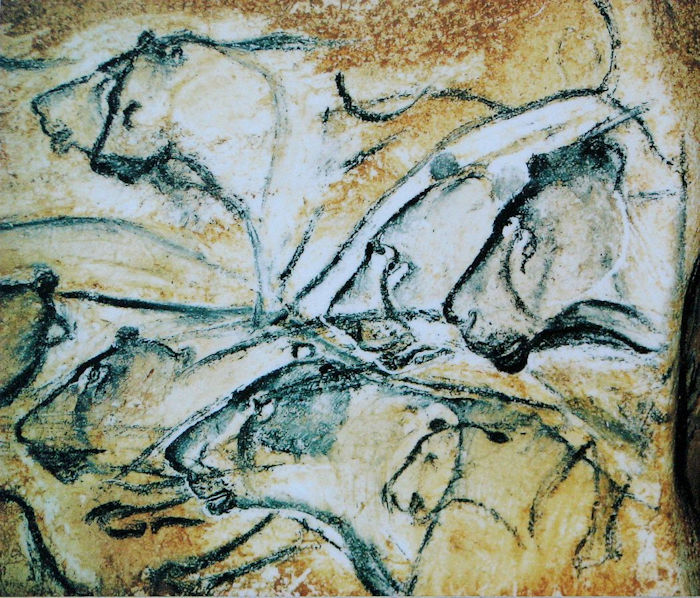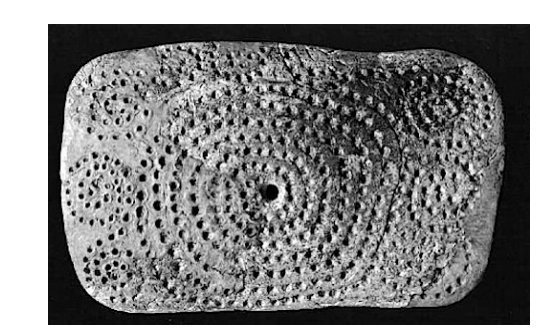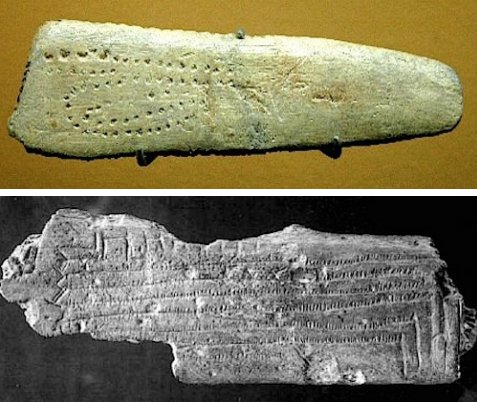Astonishing Lunar And Solar Calendars Created 30,000 B.C.
Ellen Lloyd - AncientPages.com - At first glance, these ancient artifacts may look like ordinary bones covered with insignificant dots. That is not the case, however.
Closer examination of carved-engraved bone plates discovered in France has revealed people created astonishing lunar and solar calendars 30,000 B.C.
Chauvet-Pont d'Arc cave replica, the lions "fresco". Credit: HTO - Public Domain
For as long as anyone can remember, people have been fascinated with the night skies. There are many examples of how our ancestors’ profound interest in astronomy.
Observations of celestial objects took place in many prehistoric societies. Today, we can admit that ancient astronomers possessed advanced knowledge about the Sun, the Moon, asteroids, various solar planets, and interesting cosmic events. When and where people started to study the heavens and celestial objects is impossible to say, but if we turn our attention to Europe, we discover something quite extraordinary.
European Paleolithic works of art can be dated to approximately 30 000 BC. and are considered one of the achievements of the Upper Paleolithic cognitive revolution. The earliest cave paintings in La Grotte Chauvet-Pont-d’Arc, France were created about 31 000 years ago. Not only are the images a great example of prehistoric art, but they have also motivated researchers to attempt to “decipher” the meaning and purpose behind some of the ancient symbols.
While examining Paleolithic cave art scientists discovered that Paleolithic people had a great interest in astronomy.
Alexander Marshack (1918-2004), an American independent scholar and Paleolithic archaeologist, was one of the first scientists who stated astronomy played an essential role during the Upper-Paleolithic era.
He studied ancient bone fragments discovered in French caves. He interpreted the various Paleolithic and Mesolithic, mostly portable, objects that bear engraved or painted series of dots or lines as accurate lunar observations.
Juan Antonio Belmonte writes in the book Ancient Astronomy: India, Egypt, China, Maya, Inca, Aztec, Greece, Rome, Genesis, Hebrews, Christians, the Neolithic and Paleolithic that Marshack’s “arguments were based not only on counting the signs but on what he called “microscopic analysis.”
The interpretation of the markings on various artifacts as notational systems rests on the hypothesis of a slow accumulation of these marks, which correlates with lunar or solar motion. Thus he concluded that these artifacts reflect nonarithmetic observational astronomical skills and lore. The most well-known depiction interpreted by him is found on the bone plate about 30 000 years old, from Abri Blanchard (Dordogne, France), which is said to represent the waxing and waning moon positions in serpentine form.”
Top: Abri Blanchard, Dordogne, France. Archaeological Museum. Bottom: Cave of Taï, Drôme, France
“Francesco d’Errico and colleagues developed a different type of methodology (d’Errico 1989). Drawing on experimental archaeology, they compiled a database in an attempt to demonstrate whether the notches represent notational systems or not.
After investigating a great number of artifacts they concluded that there were some objects which might have depicted parts of a series of complex codes based on the hierarchical organization of information, and using formally differentiated marks. One of these artifacts might be the find from the cave Taï (Drôme, France) whose age is about 10 000 years.
After studying Eurasian portable art the Russian investigator B.A. Frolov also became convinced that these objects were calendars following the monthly motion of the moon and/or yearly solar path, and claimed they were used by early communities. The most well-known bone plate interpreted as a lunisolar calendar is from Ma’lta (Irkutskaya Oblast, Russia).”
The theory that people created such complex lunar and solar calendars so long ago may sound somewhat far-fetched. Still, there is a lot of evidence that suggests our ancestors were rather familiar with the movements of the Sun, Moon, and even other planets.
Updated on March 22, 2022
Written by Ellen Lloyd – AncientPages.com
Copyright © AncientPages.com All rights reserved. This material may not be published, broadcast, rewritten or redistributed in whole or part without the express written permission of AncientPages.com
More From Ancient Pages
-
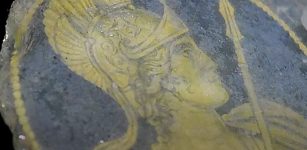 Extremely Rare Ancient Gold Glass With Goddess Roma Found During Subway Works In Rome
Archaeology | Feb 13, 2023
Extremely Rare Ancient Gold Glass With Goddess Roma Found During Subway Works In Rome
Archaeology | Feb 13, 2023 -
 A 2,500-Year-Old Marble Disc, Designed To Protect Ancient Ships And Ward Off The Evil Eye – Discovered
Archaeology | Aug 4, 2023
A 2,500-Year-Old Marble Disc, Designed To Protect Ancient Ships And Ward Off The Evil Eye – Discovered
Archaeology | Aug 4, 2023 -
 Denisovan DNA Found In The Genome Of Oldest Human Fossil Discovered In Mongolia
Archaeology | Oct 30, 2020
Denisovan DNA Found In The Genome Of Oldest Human Fossil Discovered In Mongolia
Archaeology | Oct 30, 2020 -
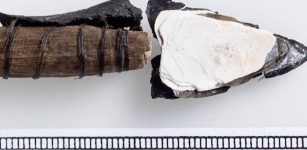 Unique Ancient Artifacts Discovered In Melting Ice Patches In Norway
Archaeology | May 19, 2022
Unique Ancient Artifacts Discovered In Melting Ice Patches In Norway
Archaeology | May 19, 2022 -
 Strange Ancient Measurements Of The Earth Revealed – Ancient Texts And Physical Evidence Examined
Ancient Mysteries | Apr 11, 2018
Strange Ancient Measurements Of The Earth Revealed – Ancient Texts And Physical Evidence Examined
Ancient Mysteries | Apr 11, 2018 -
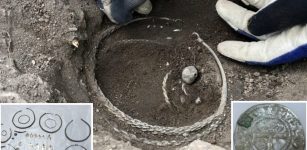 Unique Viking Age Silver Treasure Found On Farm Near Stockholm In Sweden
Archaeology | Nov 12, 2020
Unique Viking Age Silver Treasure Found On Farm Near Stockholm In Sweden
Archaeology | Nov 12, 2020 -
 Matches Were Invented In Ancient China
Ancient History Facts | Mar 7, 2019
Matches Were Invented In Ancient China
Ancient History Facts | Mar 7, 2019 -
 Mysterious Ancient Human Skeletons Found In Florida Lake Puzzle Archaeologists – Unknown Lost Settlement?
Featured Stories | May 21, 2024
Mysterious Ancient Human Skeletons Found In Florida Lake Puzzle Archaeologists – Unknown Lost Settlement?
Featured Stories | May 21, 2024 -
 Why Does The Inner Ear Of Neanderthals Pose An Evolutionary Riddle?
Evolution | Feb 20, 2025
Why Does The Inner Ear Of Neanderthals Pose An Evolutionary Riddle?
Evolution | Feb 20, 2025 -
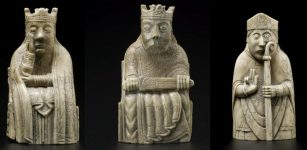 Beautiful Viking Uig Chessmen Recreated In 3D Images
Archaeology | Sep 17, 2019
Beautiful Viking Uig Chessmen Recreated In 3D Images
Archaeology | Sep 17, 2019 -
 Sacred Bird Garuda And Stealing Of Amrita Drink Of Immortality From The Gods
Featured Stories | Jun 5, 2019
Sacred Bird Garuda And Stealing Of Amrita Drink Of Immortality From The Gods
Featured Stories | Jun 5, 2019 -
 Neanderthal Intelligence Revealed By Their Use Of Fire For Cooking
Archaeology | Oct 13, 2023
Neanderthal Intelligence Revealed By Their Use Of Fire For Cooking
Archaeology | Oct 13, 2023 -
 Why Some Stories About Ancient Roman Emperor Nero Are Wrong
Featured Stories | Nov 21, 2016
Why Some Stories About Ancient Roman Emperor Nero Are Wrong
Featured Stories | Nov 21, 2016 -
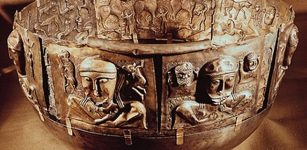 Gundestrup Cauldron: Great Gilded Silver Vessel Decorated With Scenes Derived From Celtic Mythology
Artifacts | May 30, 2016
Gundestrup Cauldron: Great Gilded Silver Vessel Decorated With Scenes Derived From Celtic Mythology
Artifacts | May 30, 2016 -
 Rare Viking Artifacts Hidden Beneath The Ice Discovered By Archaeologists In Norway
Archaeology | Feb 6, 2021
Rare Viking Artifacts Hidden Beneath The Ice Discovered By Archaeologists In Norway
Archaeology | Feb 6, 2021 -
 Rock-Cut Chambers In “House of Muses” Of Zeugma, Home To Numerous Mosaics
Archaeology | Jul 27, 2021
Rock-Cut Chambers In “House of Muses” Of Zeugma, Home To Numerous Mosaics
Archaeology | Jul 27, 2021 -
 Ancient Byblos: Powerful Phoenician City With Own Kings
Civilizations | Apr 23, 2016
Ancient Byblos: Powerful Phoenician City With Own Kings
Civilizations | Apr 23, 2016 -
 Remains Of 2,500-Year-Old Aphrodite Temple Unearthed In Turkey
Archaeology | Jan 7, 2021
Remains Of 2,500-Year-Old Aphrodite Temple Unearthed In Turkey
Archaeology | Jan 7, 2021 -
 Enigmatic Cernunnos – Most Ancient, Stag-Antlered, Peaceful God Of Celtic People
Celtic Mythology | Aug 26, 2019
Enigmatic Cernunnos – Most Ancient, Stag-Antlered, Peaceful God Of Celtic People
Celtic Mythology | Aug 26, 2019 -
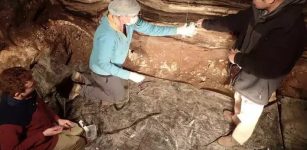 DNA Reveals 300,000 Years Of Hominin And Animal Presence At Denisova Cave
Archaeology | Jun 26, 2021
DNA Reveals 300,000 Years Of Hominin And Animal Presence At Denisova Cave
Archaeology | Jun 26, 2021

